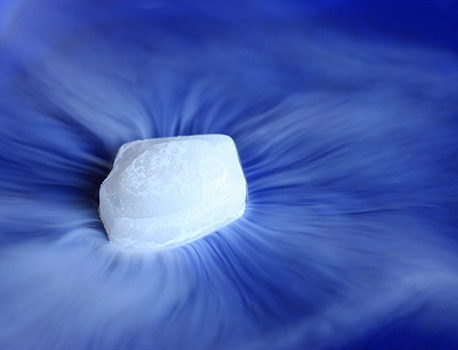Dry ice is solid carbon dioxide. The name dry ice refers to the fact that the substance changes from a solid to a gas without first becoming liquid. Because of this property, dry ice is widely used in industry to refrigerate food, medicine, and other materials that would be damaged by the melting of ordinary ice. Chemists use a mixture of dry ice and acetone or isopropyl alcohol to cool chemicals during certain reactions.

Dry ice is made in snowlike flakes or in blocks. Flakes are produced by cooling and compressing liquid or gaseous carbon dioxide. Blocks are formed by further compression of the flakes.
Dry ice has a temperature of -109.3 °F (-78.5 °C), which is much colder than the temperature of ordinary ice. For this reason, special care must be taken when handling dry ice to avoid frostbite.
